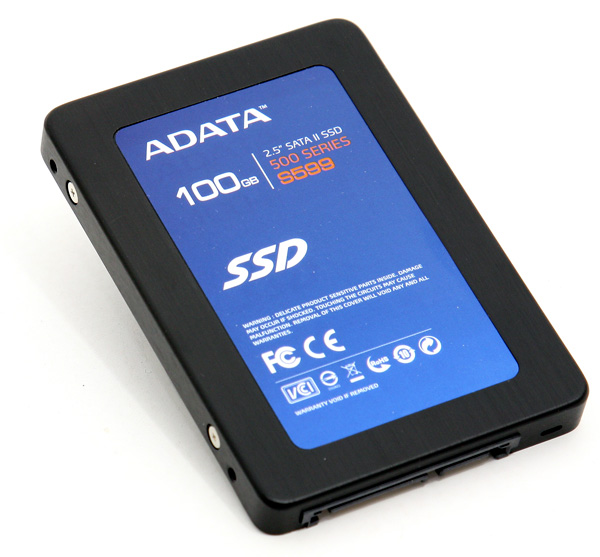Solid State Drives 101
Solid State Drives 101
Next to the development of multi-core CPU technology and the evolution of the GPU, one of the technologies growing extremely fast is SSD drive technology. It's a booming market and it just doesn't stop evolving -- though slowly but steadily things are stabilizing.
Merely 4-5 years ago I had this 256MB flash-drive writing at 400KB/sec, that was the sickest piece of technology in terms of volume and read/write performance. Once the development reached a volume size of 1GB, things really took off. 1, 2, 4, 8, 32 and 64 GB flash drives are now considered normal while 256GB sticks are just out. Who does not have a 8 GB flash-USB stick, for example? This trend opened up the eyes of some clever vendors.
One of the culprits of flash memory was often related to the read/write speed. Thanks to fast adoption of multi-channel controller innovations inside flash memory units, the trend of flash-drives or Solid State Drives really pushed through as read and write performance took off real fast.
The alarmingly fast move towards solid-state hard drives (SSD) for notebooks, PCs and servers seems like a rather exciting development at first glance. Unlike their mechanical counterparts, which have spindle motors, rotating platters and read/write heads, the solid-state drives consist of flash memory chips and have no moving parts whatsoever. The benefits that these drives offer compared to a mechanical drive are numerous.
The weakness however is that SSDs were expensive. We are now in 2010, and never, ever has a technology developed so fast in terms of speed and reliability versus the money you need to pay for it. And though value is a very relative thing, the first SSD drives, price wise, are slowly but steadily competing with the fastest HDDs like the WD Velociraptor and are slowly moving onto a competitive level.
Before we go deeper into the review, I wanted to chat with you a little about what precisely the difference between the traditional HDD (hard disk drive) and all new SSD is. When we look at the HDD we receive a big bulky mechanical chunk of technology; they have spindle motors, rotating magnetic platters and read/write heads. Solid-state drives however consist of flash memory chips and have no moving parts whatsoever, which is a tremendous gain.
In this year and age, solid state disks (SSDs) are typically faster than regular disks because there is zero latency (the read/write head does not need to move anymore). Next to that, flash memory can be addressed in multiple channels. Look at that as internal RAID, and it improves speed tremendously. This year we have already seen SSD drives topping 250 MB/s read speeds and 200 MB/s write speeds, and these numbers keep changing with each review that we write.
SSDs are also more sturdy than hard disks and offer greater protection in hostile environments. As a result, they may also be used in desktop computers and even servers in dangerous locations.
The difference between SLC and MLC
All flash memory is not created equal. There are 2 main types, SLC and MLC.
SLC and MLC (single and multi level cells) SLC stores one bit per cell, MLC doubles it and is much cheaper to manufacture. As such we see MLC NAND Flash memory used for example in your digital camera. If we break it down:
- SLC is faster, and has around 100,000 up-to 1 million write cycles
- MLC is somewhat slower but cheaper, unfortunately also less reliable (sometimes as few as 10,000 write cycles).
And that's where we land at limited write cycles. The reality is that you purchase a SSD drive on borrowed time. By its very nature, flash memory cells can resist only so many write cycles before they are prone to failure.
Typically SLC flash storage will wear out after hundreds of thousands of write cycles whereas MLC flash storage will wear out after 10.000 write cycles.
Special file systems or firmware designs mitigate this problem by spreading writes over the entire device (so-called wear leveling), rather than rewriting files in one place. Wear leveling is designed to prevent rewriting the same cell constantly. Pretty much: data is constantly spread out over the entire drive so that all cells will be written equally over time. Wear leveling isn't done in hardware, it is done in firmware on the SSD. It will spread the writes over the whole range of the NAND storage, so you can't really wear out one area while the rest stayed untouched.
At this very moment the life-span of a typical SSD drive MTBF (Mean Time Before Failure) is 1,500,000 to 2,000,000 hours, and frankly .. that number means just nothing. Fact is, we just do not know how long a drive will last or how long it'll take before it wears out.
The limited write cycles is per cell, not per disk, and all controllers have had wear leveling (using different cells) for a few years now. Any "bad" cell will be mapped out just like a bad block on a hard drive (transparently).
The culprit for MLC is lifespan, how long will it really last? Well, only the future will tell .. However, with modern flash technology and error correction, the reliability of the drive in a PC could exceed 10 years with normal usage. This remains a gamble though.
Most manufacturers will therefore grant a two year warranty. We would very much like to see a 5 year warranty from manufacturers, there's nothing worse than data-loss. If the industry makes a commitment, we as consumers would certainly feel more confident in purchasing an SSD.

